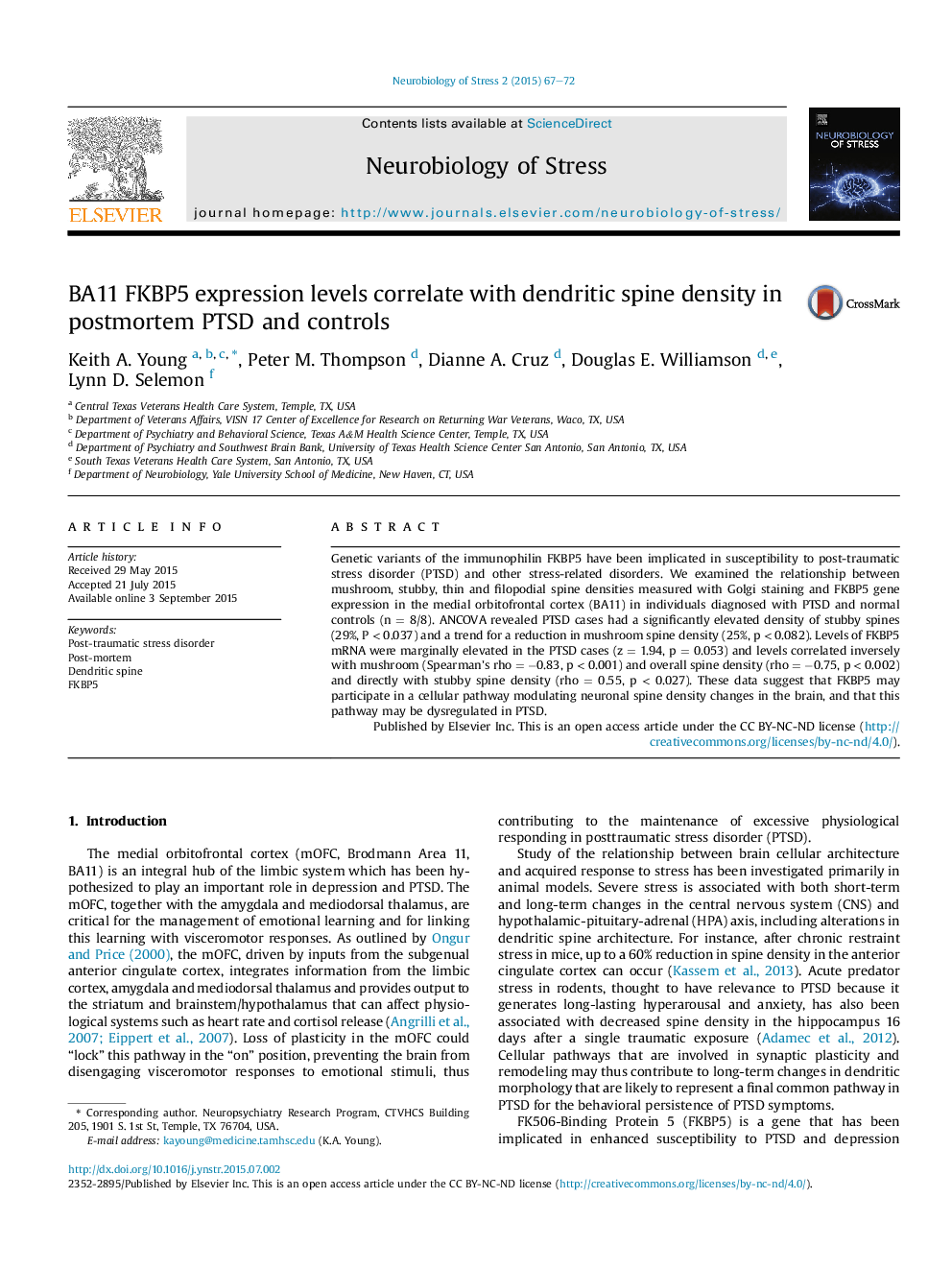| کد مقاله | کد نشریه | سال انتشار | مقاله انگلیسی | نسخه تمام متن |
|---|---|---|---|---|
| 4318539 | 1613197 | 2015 | 6 صفحه PDF | دانلود رایگان |

• The present study is one of the first human post-mortem PTSD studies to date.
• Extreme stress has robust repercussions on glucocorticoids and dendritic spine morphology in animal models.
• FKBP5, involved in glucocorticoid signaling, was inversely associated with mushroom spine density in frontal cortex.
• These findings are consistent with alterations in glucocorticoid signaling in PTSD affecting synaptic plasticity.
Genetic variants of the immunophilin FKBP5 have been implicated in susceptibility to post-traumatic stress disorder (PTSD) and other stress-related disorders. We examined the relationship between mushroom, stubby, thin and filopodial spine densities measured with Golgi staining and FKBP5 gene expression in the medial orbitofrontal cortex (BA11) in individuals diagnosed with PTSD and normal controls (n = 8/8). ANCOVA revealed PTSD cases had a significantly elevated density of stubby spines (29%, P < 0.037) and a trend for a reduction in mushroom spine density (25%, p < 0.082). Levels of FKBP5 mRNA were marginally elevated in the PTSD cases (z = 1.94, p = 0.053) and levels correlated inversely with mushroom (Spearman's rho = −0.83, p < 0.001) and overall spine density (rho = −0.75, p < 0.002) and directly with stubby spine density (rho = 0.55, p < 0.027). These data suggest that FKBP5 may participate in a cellular pathway modulating neuronal spine density changes in the brain, and that this pathway may be dysregulated in PTSD.
Journal: Neurobiology of Stress - Volume 2, 2015, Pages 67–72